After months of questions, concerns, and anxiety, the Ottawa Senators finally announced that Brady Tkachuk had signed, putting pen to paper on a seven-year deal worth $57.5 million, or an annual average value (AAV) of $8.214 million. The deal came in at the last possible moment, too, just hours before the season opener. He’ll still miss three games while he gets back up to speed after sitting out all of training camp, but his debut couldn’t be more anticipated; he received a huge cheer when he appeared on the jumbotron during Ottawa’s season opener against the Toronto Maple Leafs. With his deal in the books, the team can put all their worries behind them and move on with the 2021-22 season.
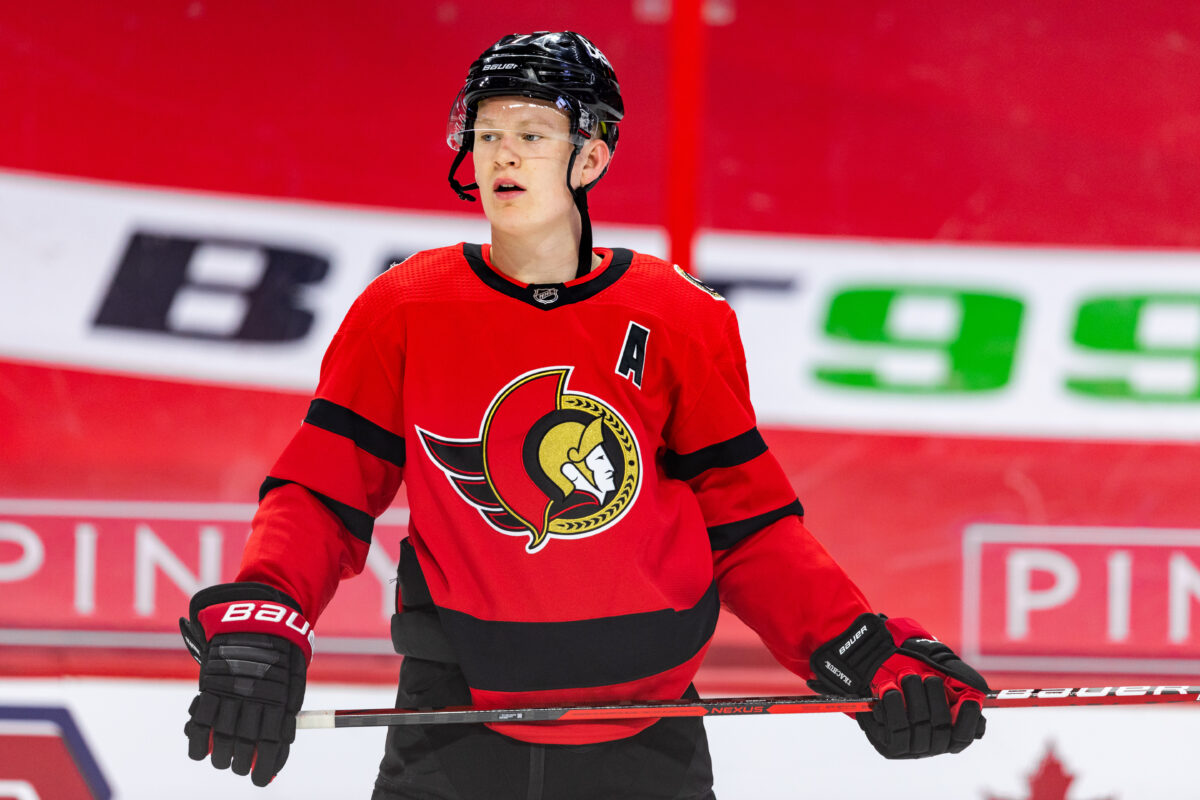
Or can they? The NHL has seen a fair share of contract holdouts throughout its history, and many of them have had long-lasting impacts on both the player and the team. It’s always a bold strategy to sit out while bargaining for a bigger paycheck, and many of the players, from Keith Tkachuk to Mark Messier, had their reputations forever tarnished, labeled as greedy and not a team player.
Will Tkachuk fall into the same category as those who came before him? Not necessarily. By looking at some recent contract holdouts, Tkachuk can take some valuable lessons on how to best go forward. The Senators, too, can learn a thing or two on how to handle their young stars. Those who don’t know the past are doomed to repeat it, and Ottawa cannot afford to repeat the mistakes of their forbearers.
Alexei Yashin
Missed 36 Games (1995-96) and All of 1999-00
Speaking of their forbearers, we’ll start with arguably the most famous holdout in Senators’ history. In the early years of the franchise, Alexei Yashin was easily the team’s biggest star. As a rookie in 1993-94, he scored 30 goals and 79 points, which led the team and was 28 points higher than the next leading scorer, fellow rookie Alexandre Daigle. The Russian sniper repeated as Ottawa’s leading scorer the following season, once again outscoring his Canadian counterpart by a wide margin. However, the Senators were adamant that Daigle, who was just a year younger, was their franchise player, and they paid him as such, giving him a five-year, $12.25 million deal — the richest first-year contract in NHL history. Yashin, on the other hand, had signed a five-year, $4 million contract.
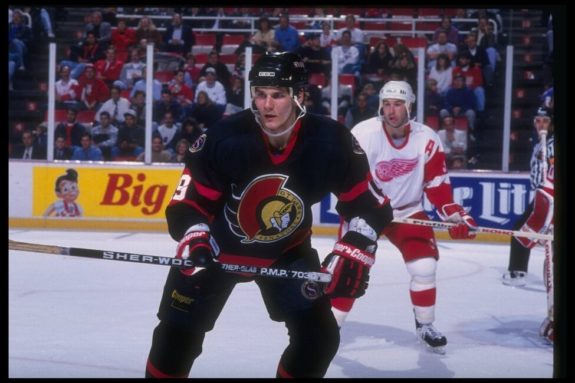
This didn’t seem fair to Yashin, who was clearly the better player over the first two seasons they were together, and he was vocal with management over what he believed he was worth in comparison. In 1995-96, with his deal set to expire at the season’s end, he told the Senators that he would sit out until given a substantial raise on his extension. Initially, management held firm against their young star, but after going 8-27-1 in the first three months, they buckled and offered him a massive raise that paid him $8.7 million over the next four seasons. Yashin returned and scored 39 points in the remaining 46 games; Daigle had just 17 points in 50 games.
Yashin continued to improve, leading the team in scoring over the next three seasons, culminating in an incredible 1998-99 season where he was also one of the best in the NHL. His 94 points ranked sixth in the league, putting him ahead of Eric Lindros and John LeClair and just shy of Joe Sakic’s total. Better yet, his 44 goals were third in the league, only behind Teemu Selanne and Jaromir Jagr. However, despite his dominance, Yashin was paid a fraction of what other stars were earning. So, he returned to management in the last year of his current contract and told them that he would once again sit out until given a raise.
Related: Senators’ 3 Worst Contracts Ever
This time, however, the small-market Senators balked at the request and refused to give him the $8 million he was looking for. The standoff lasted the entire 1999-2000 season, which was fine for Yashin as he was under the assumption that he would either get paid or become a free agent and get paid somewhere else. Yet an arbitrator ruled that because he didn’t play all season, he still owed Ottawa a year of service. It was the worst-case scenario for the Russian. He was forced to return to Ottawa in 2000-01, where he was once again their scoring leader, but it was clear he was done with the Senators. So, that offseason, he was traded to the New York Islanders, who gave him what he was looking for — $87.5 million over 10 years.
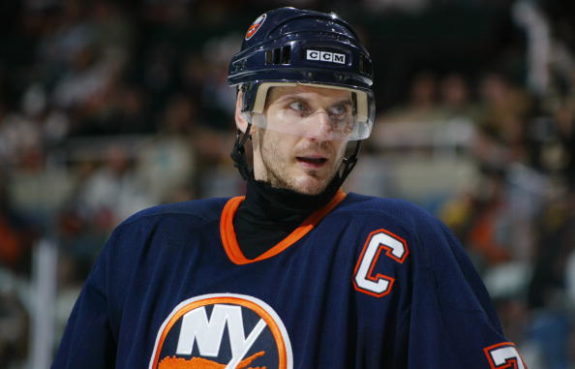
It was a tough blow for the Senators to lose their star player, but they made the most out of it. In the deal, they got the second overall pick in 2001, which they used to select Jason Spezza, plus defenceman Zdeno Chara. They joined a strong core of Daniel Alfredsson, Marian Hossa, and Wade Redden, and without the constant contract distractions, the team became one of the best in the Eastern Conference. As for Yashin, he led the Islanders in points over the next two seasons, but he soon began to falter under the scrutiny such a massive contract brings. He was finally bought out in 2007, with his deal still on the books until 2015.
Lesson for Tkachuk – Simply put, don’t let the contract distract from the game. Much like Yashin, Tkachuk is the best forward on the Senators and possibly their future captain, and thus, he should get paid like one. Thankfully, the current Senators’ management team also recognize this and made him their highest-paid player in a demonstration of his value to the organization. Now, Tkachuk just has to honor that agreement, something that shouldn’t be an issue, according to general manager Pierre Dorion. “What always impressed me was how much Brady wanted to be here long-term,” he said. “That’s why we were never worried about doing a long-term deal, and that says a lot about him.” (from ‘Garrioch: Senators sign Brady Tkachuk to a seven-year, $57.5M contract extension’, Ottawa Citizen, 14/10/21)
Patrik Laine
Missed Zero Games (2019-20)
Two seasons ago, the Winnipeg Jets found themselves in a struggle with a future star. Patrik Laine, like Yashin, was selected second overall, and when he arrived in Canada, he was an instant star. In his rookie season, he led the team with 36 goals, then scored 44 goals as a sophomore. He got off to an even better start in 2018-19, scoring 21 goals in his first 24 games, but the hot streak quickly dried up, and he ended up scoring just nine more goals throughout the season. Despite the inconsistency concerns, he was still considered one of the premier goal scorers in the league at just 21 years old, and with his entry-level deal up at the end of the season, he was looking for a big payday.
However, negotiations quickly came to a standstill. The Jets were already experiencing some cap concerns, and Laine wasn’t their only future star needing a new contract. That didn’t faze him, though; other young stars were signing deals in the $7 million-plus range, and he clearly deserved something in the same field. But the Jets weren’t meeting his demands, so he decided to wait them out while training in Switzerland. Two weeks of training camp passed before the two sides came together with a two-year bridge deal valued at about $6.75 million per season, a little under his projected value at the time, and many thought this would be the end of it.
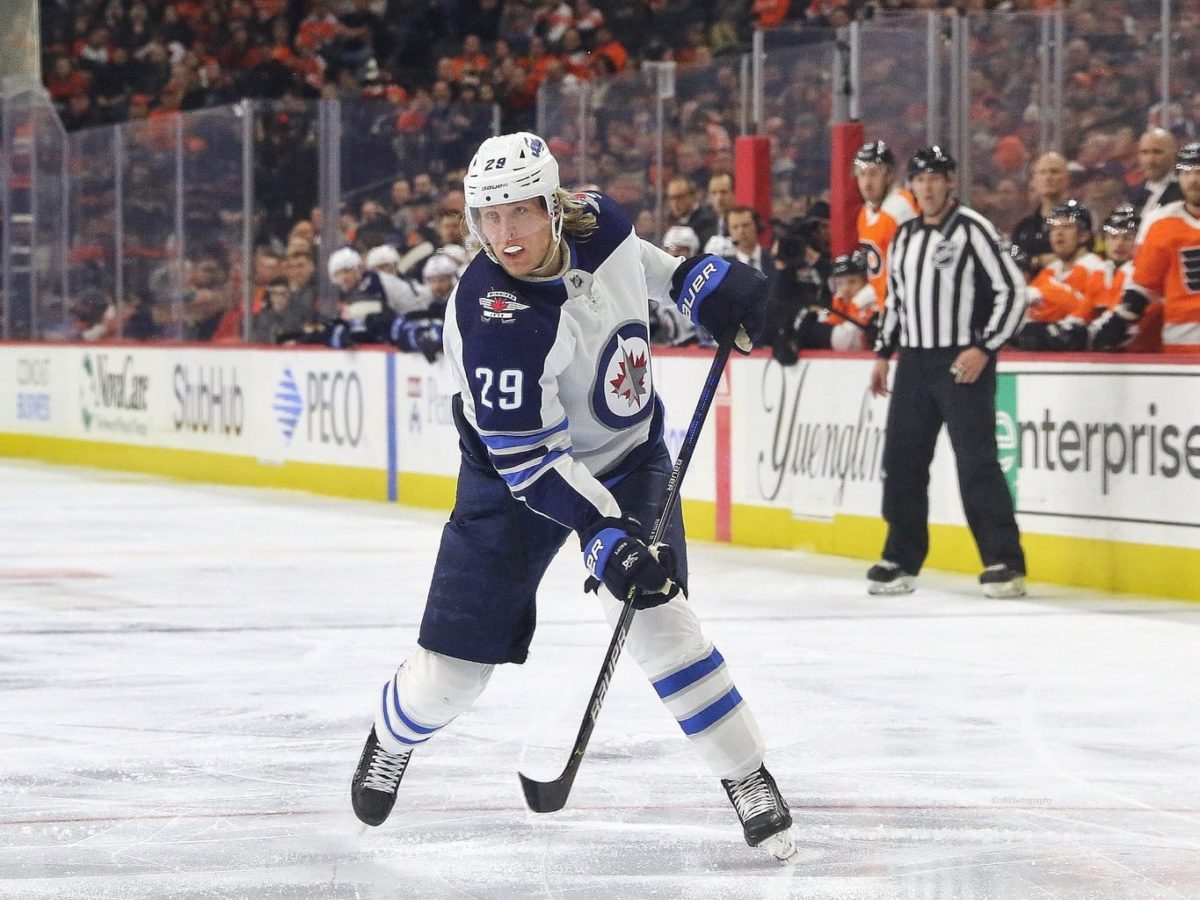
However, that ended up being the first of many issues between the Jets and Laine. He came out hot to start the 2019-20 season, scoring 10 points in the first five games. But the inconsistency issues returned, and he didn’t score again for 10 games. All of a sudden, he went from the saviour of the franchise to a young, streaky player with a big ego. Trade rumours sprouted up, and the team made no effort to quell them, which likely didn’t give the young Finn any confidence. But the biggest issue of all was that, for a good portion of the season, he was relegated to the third line, a placement that told him his team didn’t value him.
In the end, the disagreements were too big to overcome, and at the beginning of the 2020-21 season, Laine was traded to the Columbus Blue Jackets, along with Jack Roslovic in exchange for Pierre-Luc Dubois and a third-round pick. Laine’s inconsistencies didn’t improve with the Blue Jackets, and he was benched over various disagreements, but he still signed a one-year extension with the team, valued at $7.5 million. After all, he’s only 23 years old. There’s lots of time to figure out his on-ice issues… right?
Lesson for Tkachuk – Both Tkachuk and the Senators can learn something from Laine’s holdout. First, Tkachuk needs to realize that just because he’s making big money, it doesn’t put him above the rules. He still has to contribute to the team and work with coaches and management, and arguably even more so as one of the team’s leaders. But the Senators need to remember to give their best players the best opportunities. Tkachuk is not a third-line player, and he now has the paycheck to back him up. So far, there haven’t been any problems, but it will be something to keep an eye on, especially if the Senators continue to struggle to win.
Kyle Turris
Missed 23 Games (2011-12)
Kyle Turris was a highly regarded prospect in 2007 after scoring over two points per game in the British Columbia Hockey League. He was selected third overall by the then Phoenix Coyotes that summer, who believed the two-way center could transform their struggling franchise, but they weren’t going to rush him. From 2008-10, he bounced between the NHL and AHL, adding strength and refining his game under the careful supervision of the Coyotes. However, similar to Laine, Turris wasn’t thrilled with his usage. Several other top prospects from the 2007 Draft were already playing important roles on their respective teams while he was puttering away in the minors.
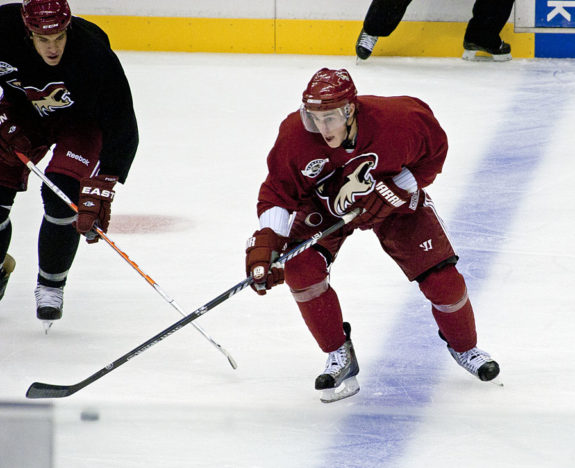
Finally, he got his opportunity to join the big club in 2010-11, and he had a strong rookie season, scoring 11 goals and 25 points in 65 games, plus three points in four playoff games. But with his entry-level deal expiring, Turris decided that he had waited long enough and that he wasn’t going to get the opportunities he wanted in Arizona. He sent an ultimatum to management, using his expired contract to demand a trade somewhere else. However, general manager Don Maloney refused to negotiate with him, making it clear that if he wanted to play anywhere that season, he would have to play in Phoenix.
The standoff lasted 23 games into the season, at which point Turris finally gave up and was forced to sign a two-year deal valued at $2.8 million. He returned to the lineup, but the bridges had already been burned. Six games later, the Coyotes shipped him off to the Senators in exchange for David Rundblad and a 2012 second-round pick. Almost instantly, Turris blossomed into the player everyone expected him to be as the third-overall pick. In his first full season, which was in 2013-14 thanks to the 2013 lockout, he scored 26 goals and 57 points. His success earned him a five-year extension at $17.5 million, and he thanked the Senators with a career season, scoring 64 points in 82 games while sporting an “A” on his sweater.
Injuries slowed down his production, but he was still an effective center on the team and was looking for a deal reportedly valued at about $6.5 million a season, with his deal expiring at the end of 2017-18. But, according to Turris, owner Eugene Melnyk wasn’t interested in signing him for that price tag, and the Senators traded him to the Nashville Predators for Matt Duchene. Dorion dismissed the claim, saying it was a team decision, but in any case, Turris wasn’t happy to leave Ottawa, and it showed in his production.
Turris’ career has since fallen off the map. He signed a $36 million, six-year extension with the Predators, but they bought him out after three seasons of middling production. He then signed a two-year deal with the Edmonton Oilers, where he’s been a third-line center.
Lesson for Tkachuk: Turris’ situation was almost impossible to avoid. He played well with the Senators, but the team decided he was too expensive to keep and traded him for a center that was more expensive and brought about the same impact offensively. So, maybe the lesson is to stay on Melnyk’s good side. The owner and organization have had a rough history with its star players, and it almost always boils down to money. Despite knowing they wanted to stick around long-term, the team chased both Alfredsson and Erik Karlsson out of town simply because they were too expensive. Hopefully, this is a turning of the page on the franchise, but reports during the summer suggest that Melnyk is doing the same thing with Tkachuk.
Ryan O’Reilly
Missed 19 games (2012-13)
The 2013 lockout put a lot of teams in frustrating situations, but none more so than the Colorado Avalanche. Ryan O’Reilly, a second-round pick in 2009, had emerged as an unexpected star, making the team for the 2009-10 season and recording 26, 26, and 55 points in his first three seasons. He was up for an extension at the end of 2011-12, but negotiations soon ground to a halt, which was only slowed further by the 2013 lockout. With no reported movement from either side, O’Reilly decided to go play in the KHL while he waited for the NHL to return, content to wait out his team like many holdouts before him.
When the season resumed in January 2013, little had changed between the two sides. That’s when the Calgary Flames decided to pounce, sending O’Reilly an offer sheet, a two-year offer worth a whopping $10 million, including a $2.5 million signing bonus. The hockey world was astounded at the audacity of the signing — not only was it an offer sheet, which has a terrible reputation among general managers, but also incredibly short-sighted. Had the Avalanche passed and taken the two draft picks as compensation, O’Reilly would have had to first pass through waivers, as he was coming over from Russia, and the Flames likely would have lost him before he even played a game for them.
Thankfully for Calgary, the Avalanche bailed them out and matched the offer, and O’Reilly returned to Colorado with 29 games remaining. The following season, he had a career year, scoring 28 goals and 64 points, and he followed it up with another 55-point season. But by 2015, the team were in tight with the cap. Tyson Barrie, Nathan MacKinnon, and Gabriel Landeskog were going to cost them, leaving O’Reilly the odd man out. He became little more than a cap casualty, sending him to the Buffalo Sabres in exchange for Mikhail Grigorenko, Nikita Zadorov, JT Compher, and a second-round pick.
It worked for everyone in the end. O’Reilly, after a few miserable seasons with the Sabres, joined the St. Louis Blues and helped them to their first-ever Stanley Cup. The Avalanche managed to keep their other big stars and were able to transform into a Western Conference powerhouse. The only loser was Flames general manager Jay Feaster, who was fired midway through the 2013-14 season.
Lesson for Tkachuk – Sometimes it can be wise to take a hometown discount, especially when the team is on the verge of something great. Many within the Avalanche organization have taken lower paycheques: MacKinnon only carries a $6.3 million cap hit, while Landeskog has a $7 million cap hit. Now, this piece of advice is admittedly a little late, and I don’t think anyone would say that he took much of a discount; some may argue he actually is making more than he’s worth when looking at the players in the same salary bracket. But it also seems that Tkachuk didn’t try and cash in big on his first contract, so maybe he already learned this lesson from O’Reilly.
William Nylander
Missed 28 Games (2018-19)
There likely hasn’t been a more polarizing holdout in the post-lockout NHL than William Nylander, who sat out two full months while negotiating with the Toronto Maple Leafs in 2018-19. There was plenty of hype when Toronto selected him eighth overall in 2014. The excitement only grew when Mitch Marner and Auston Matthews joined him in subsequent years. In three short seasons, the team had gone from one of the weakest farm systems to one of the best, and those three were at the center.
Nylander was the oldest of the group and thus joined the Maple Leafs first, making his debut in 2015-16, scoring 13 points in 22 games. It was a decent first showing that promised to only improve as he developed. In his first full campaign, he scored 61 points over 81 games, which he repeated in 2017-18. It was everything the Maple Leafs had hoped he would be and alongside Matthews and Marner, the trio led the team in scoring, sitting one-two-three at the end of 2018. And none of them were even 23 years old yet. As long as they stayed together, this team promised to lead the team for many years.
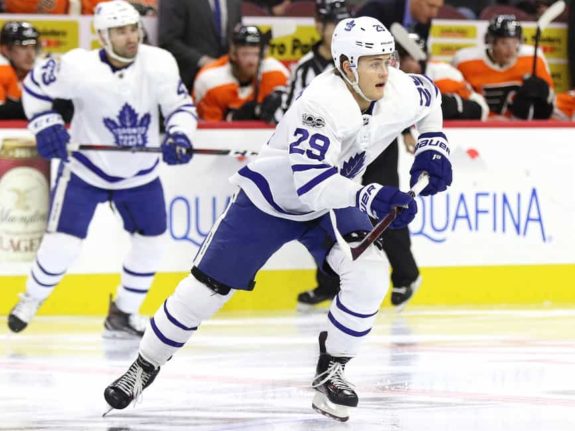
But first, Nylander needed a new contract, which is where the problems started. At the rate he was producing, he deserved a substantial raise, roughly in the $7 million AAV range, but over the summer, the Maple Leafs complicated matters when they signed free agent John Tavares to a massive seven-year deal at $11 million per season. Just like that, Toronto was looking at a salary cap Armageddon — not only did Nylander need a new deal, but Matthews and Marner were likely looking at future contracts valued similarly to Tavares.
The Maple Leafs were likely hoping to sign Nylander to a cheaper deal as he hadn’t hit the same level as Marner or Matthews, but he didn’t see it that way, and so he elected to sit out while he negotiated for a fair offer. Training camp came and went, as did all of October, and then November. Suddenly, the Dec. 1 deadline for players to be eligible to play in the 2018-19 season was hours away, and Nylander still hadn’t signed. It was a tense situation, especially after Elliott Friedman suggested that the two sides were only about $300,000 per year apart, and neither side wanted to bend. Unexpectedly, trade rumours popped up, as did criticisms that he was greedy and his holdout was bad for hockey.
Minutes before the deadline, however, the two sides finally came to an agreement: six years, $6.9 million AAV. The total was slightly below the expected asking price, but it was long-term, something Nylander was adamant about during the proceedings. “I didn’t want a bridge deal,” he said. “I want to stay in Toronto with all the players that we have and we have a great team. I didn’t want to risk it by signing a bridge deal and not being able to stay if that was going to happen.”
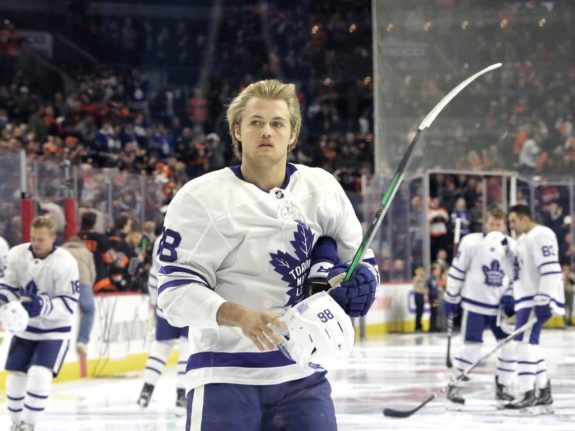
The only problem was that, after missing so much playing time, Nylander returned more than a little rusty, going 11 games before scoring his first goal and going another 11 before scoring his second. He finished the 2018-19 season with just seven goals and 27 points in 54 games, a career-low pace and a steep drop from his 20 goals and 61 points the season prior. His production has picked up back to its previous pace, as many expected it to, but the time he missed allowed Marner and Matthews to flourish alongside Tavares, increasing the perceived gap between the group, and his public perception still hasn’t fully recovered.
Lesson for Tkachuk – Tkachuk is one of the Senators’ most popular players, but like Nylander, his holdout didn’t win him any new fans. Now armed with a shiny new contract, he needs to prove that he’s worth every penny. He’s not an offensive juggernaut — it’s unlikely he’ll ever hit 90 points in his career, and even 80 is probably a stretch. But his value comes from being the heart and soul of this team. He’s a leader. If he can turn the young Senators into a pesky, driving force, leading them to the playoffs in multiple back-to-back seasons, he will have earned this contract. If the Senators continue to sit just on the outside looking into the postseason, it will be tough for him to shake the reputation of a greedy, selfish star.
Senators Have Little to Fear
Working around the salary cap has created problems that general managers and owners 20 years ago could never have fathomed. Young players who deserve big pay raises are having to either take hometown discounts or go to another franchise that can afford them, and with the salary cap unlikely to change much in the next several years, paying these future stars will only get more challenging. It’s hardly an issue of greed anymore, yet the stigma still exists around those who elect to sit out during contract negotiations.
There’s a lot to fear when comparing Tkachuk to these five players. Will he force the team to trade him because they can’t afford him? Or has his holdout stymied his development just enough to set him behind his peers? Don’t even get Senators’ fans started on the potential Melnyk issues. But there’s also a lot of hope now that he’s signed. The team didn’t short-change him, as they’ve done in the past to stars, nor did they punish him for holding out. This is a reality in the modern NHL, and Dorion handled everything as well as anyone else. Here’s hoping Tkachuk can add a few more lessons as he helps the Senators become a top team once again.